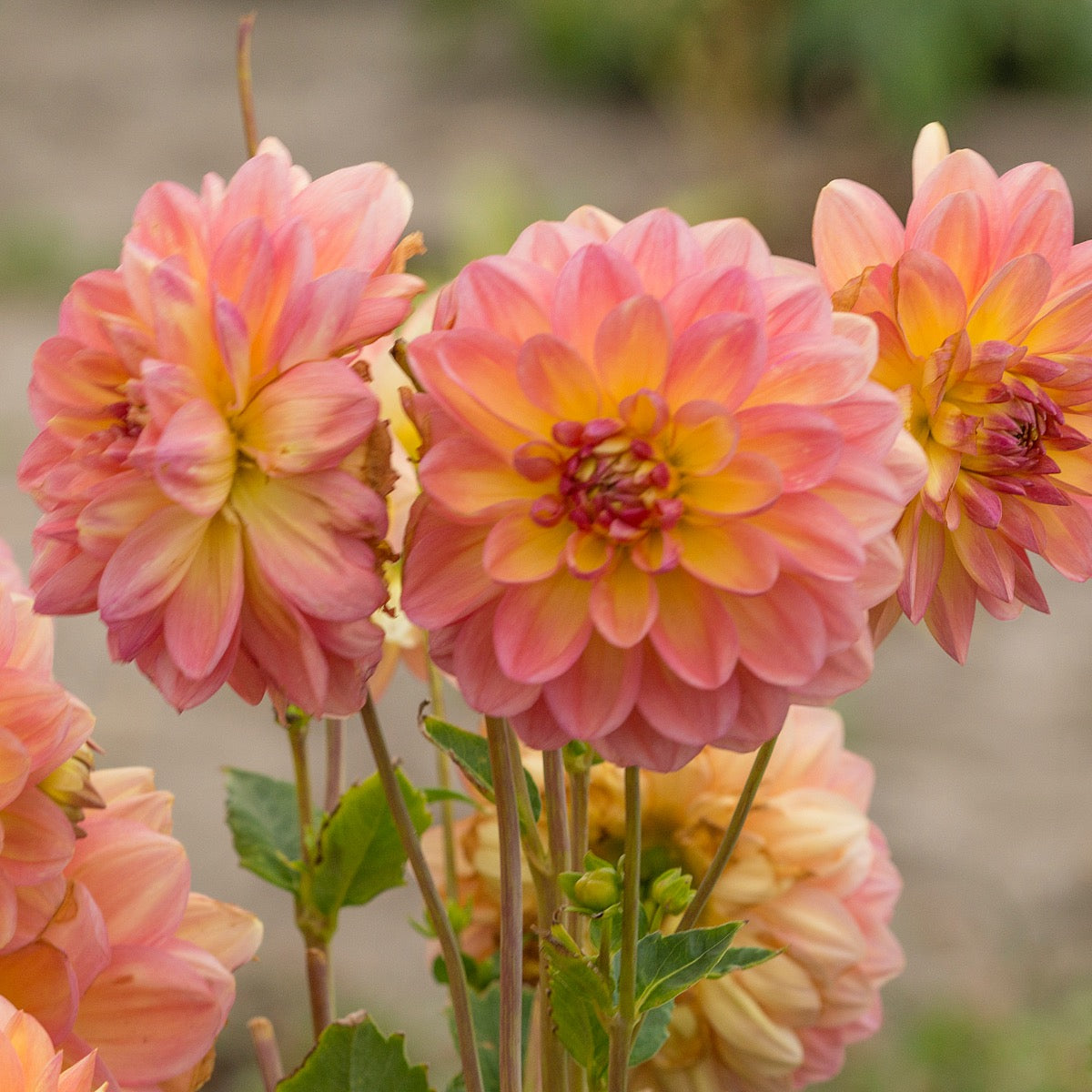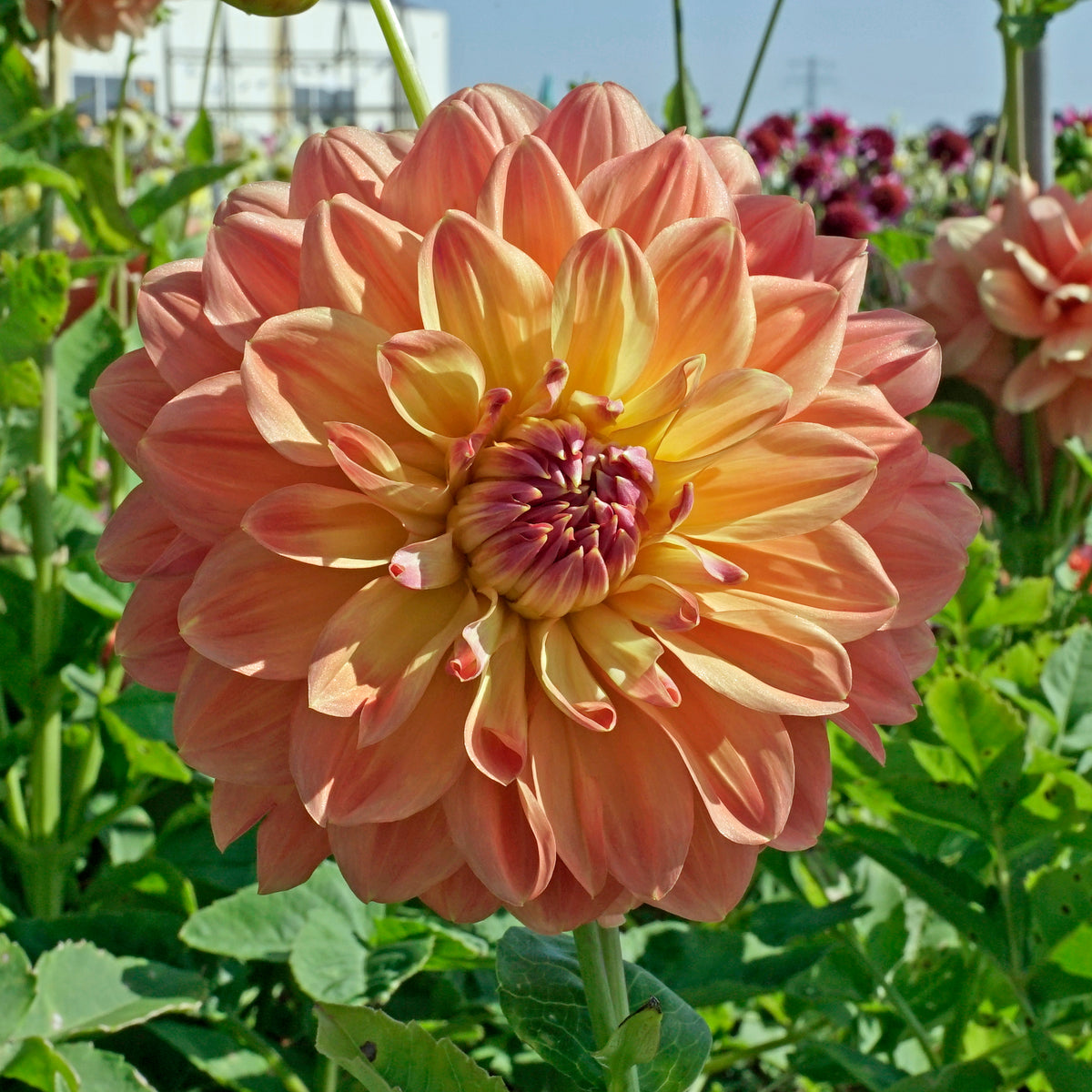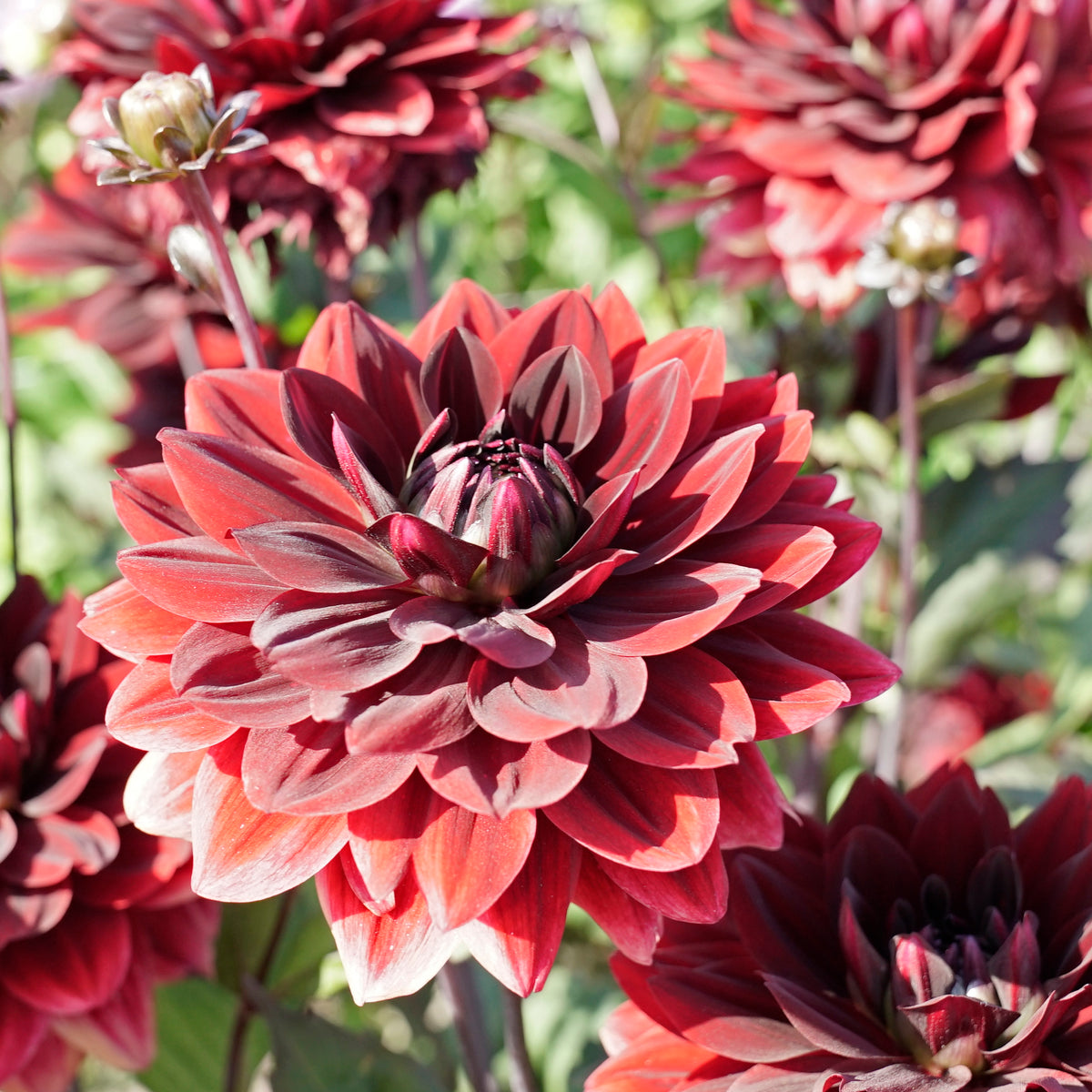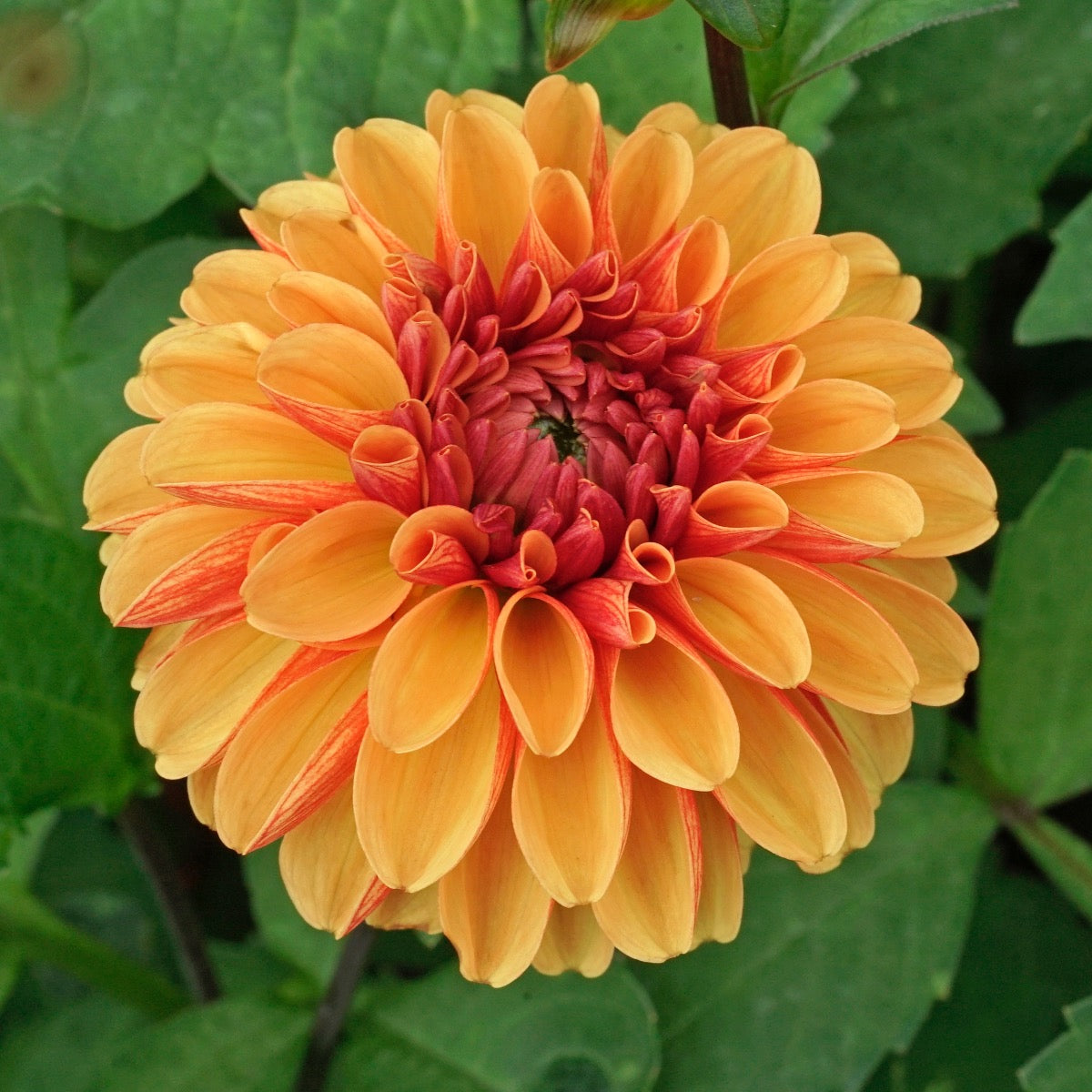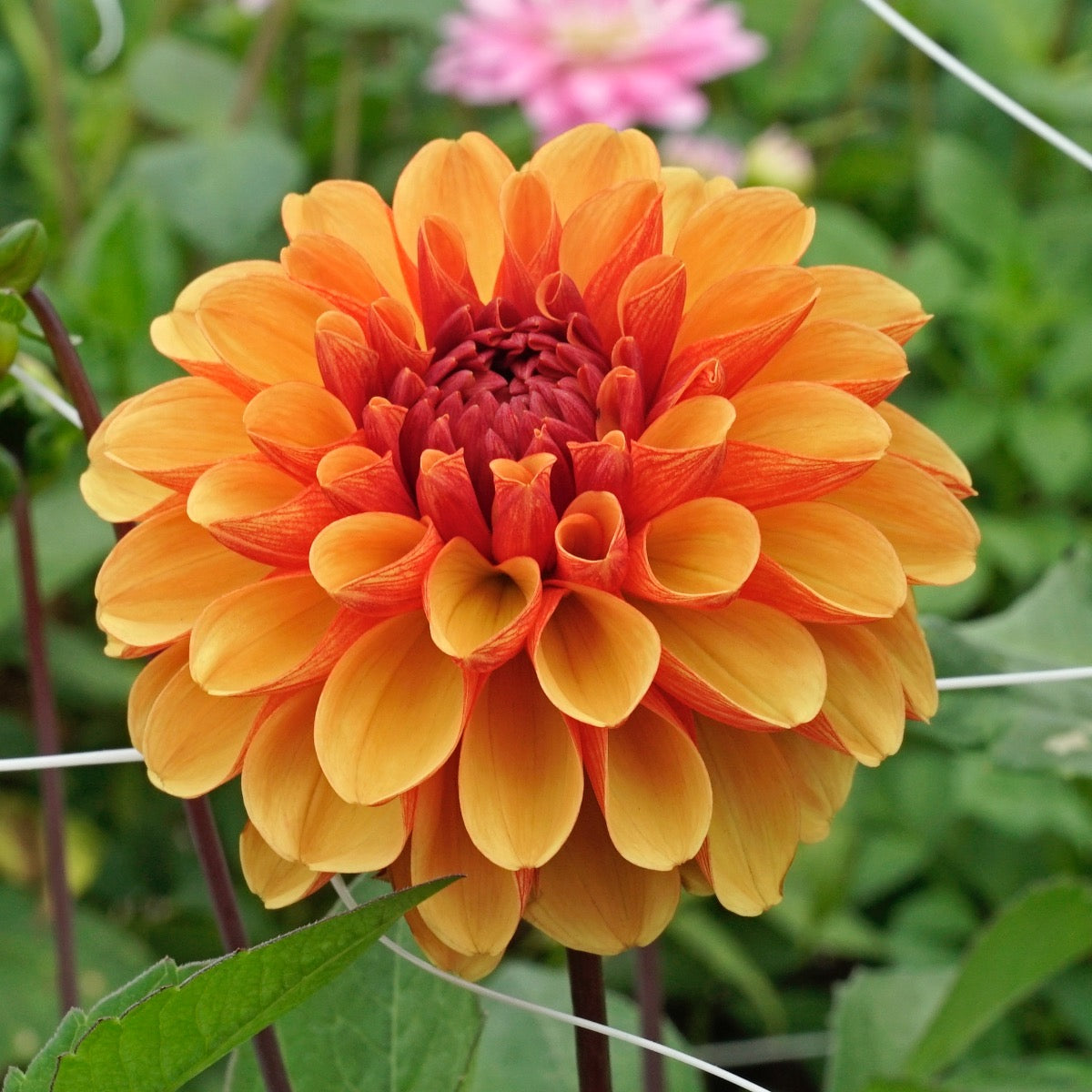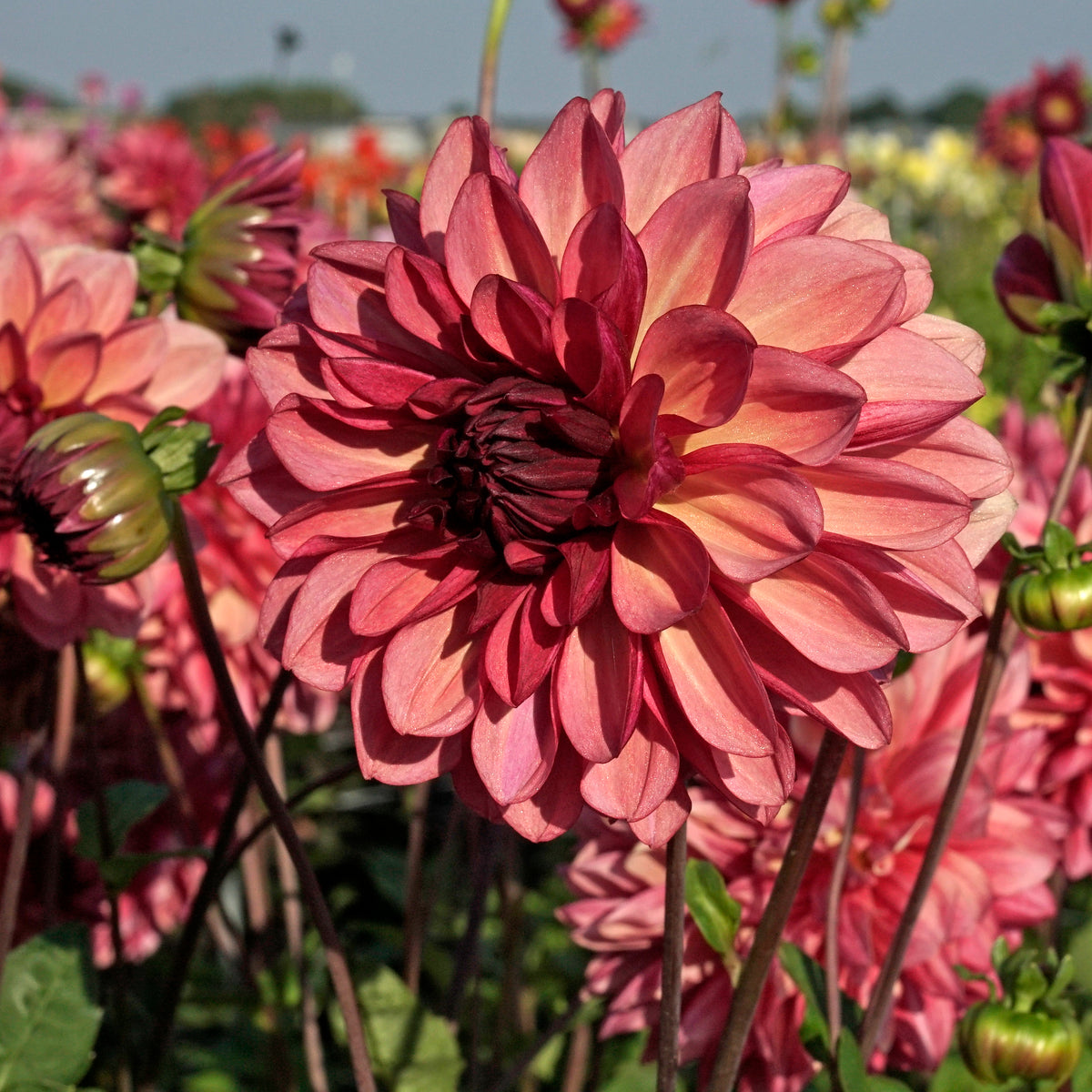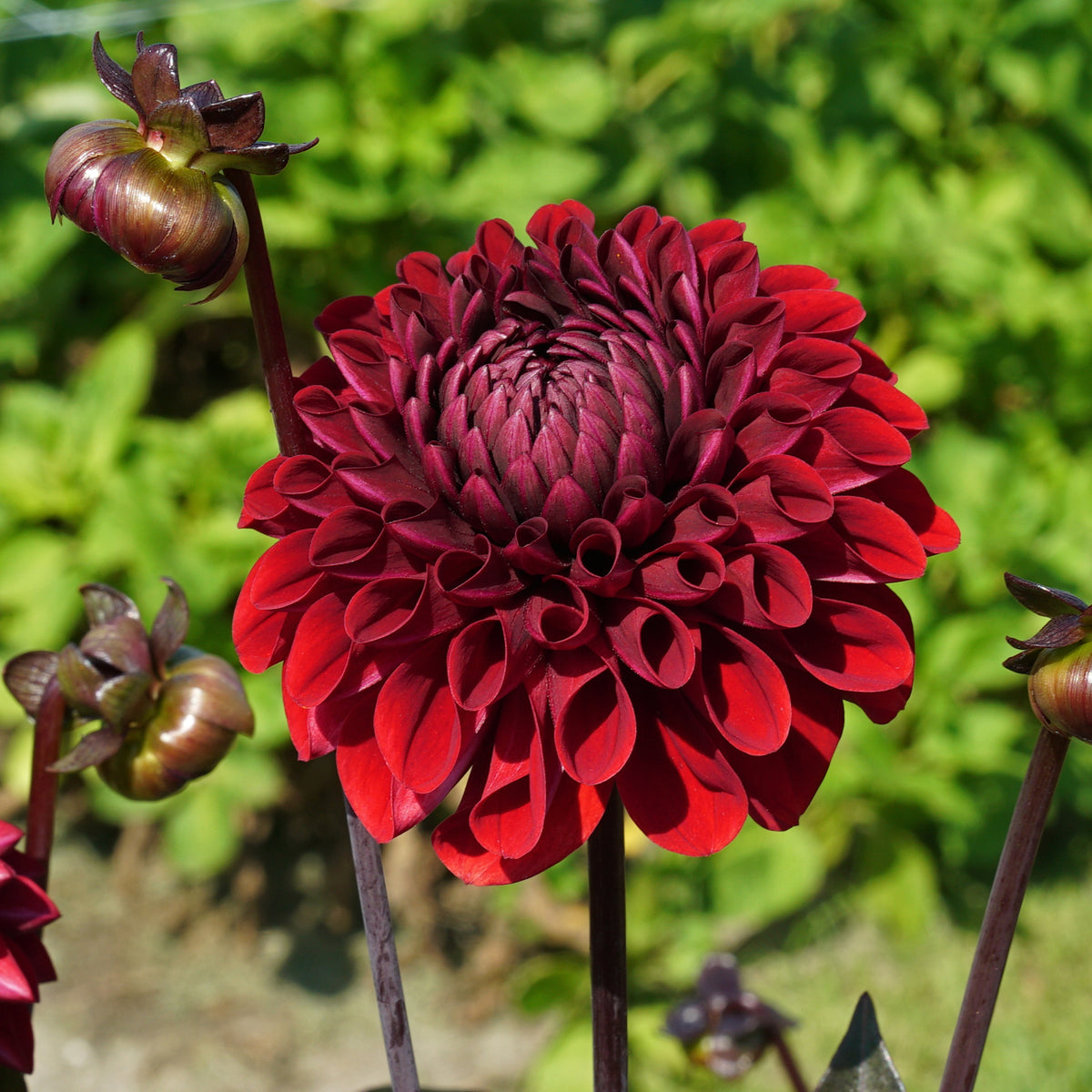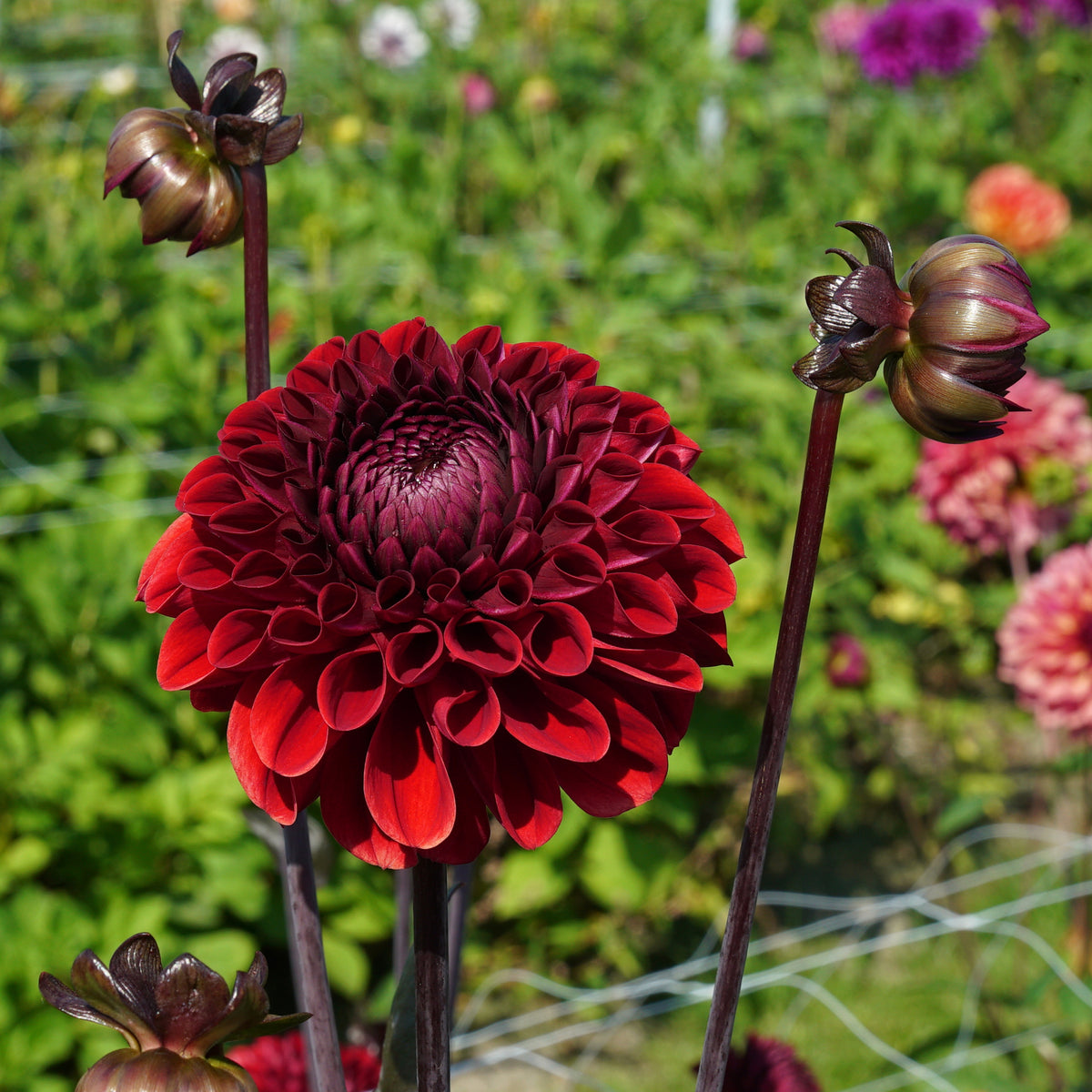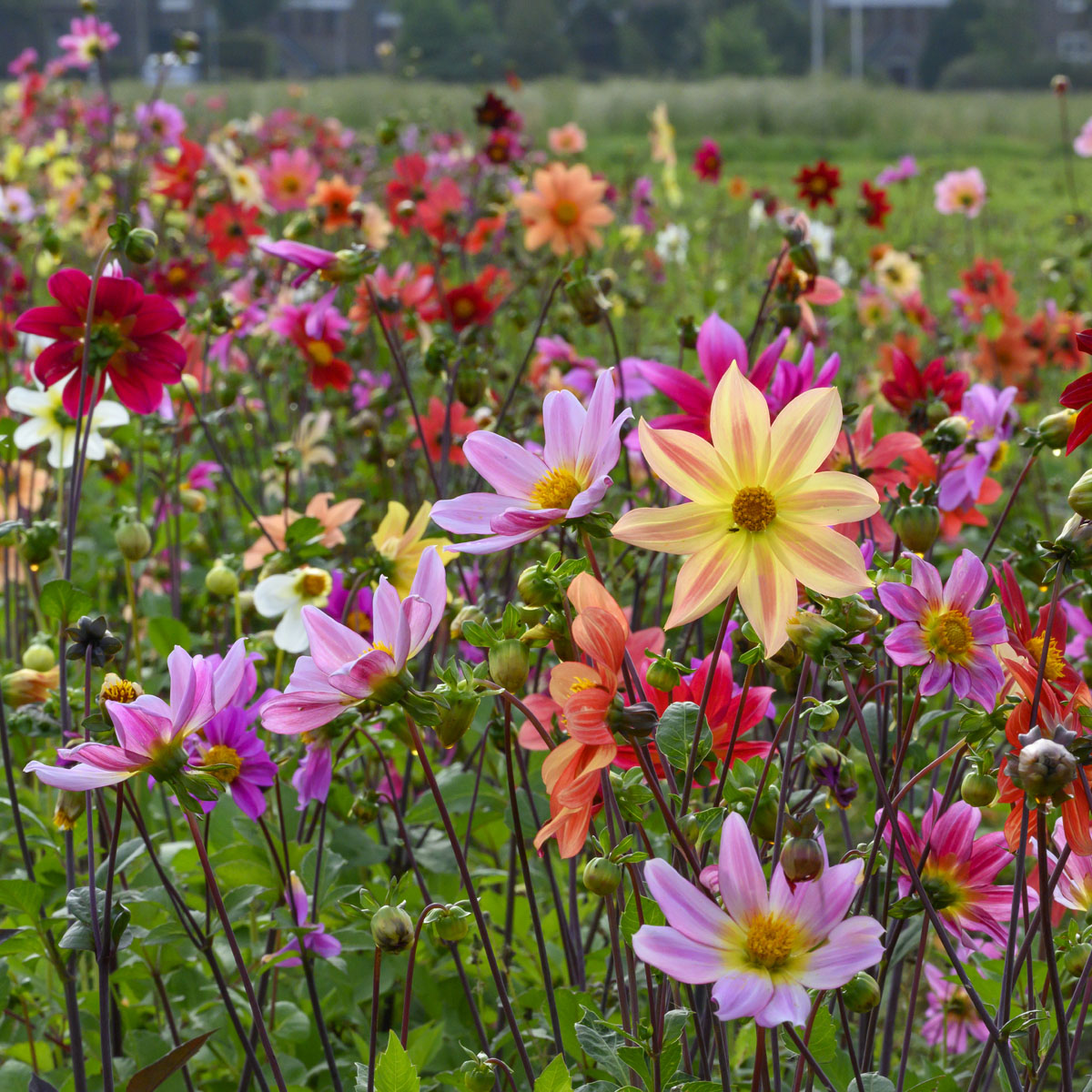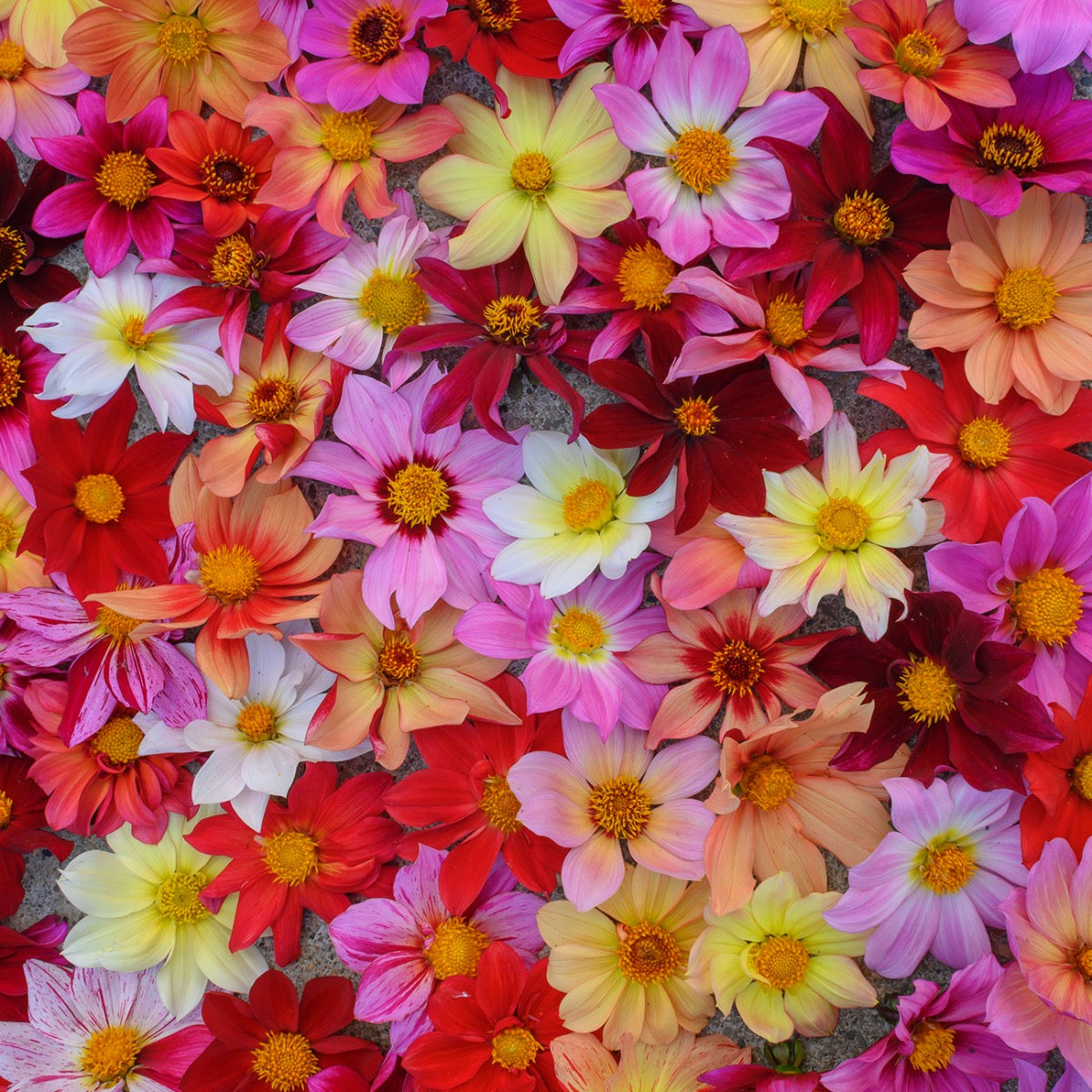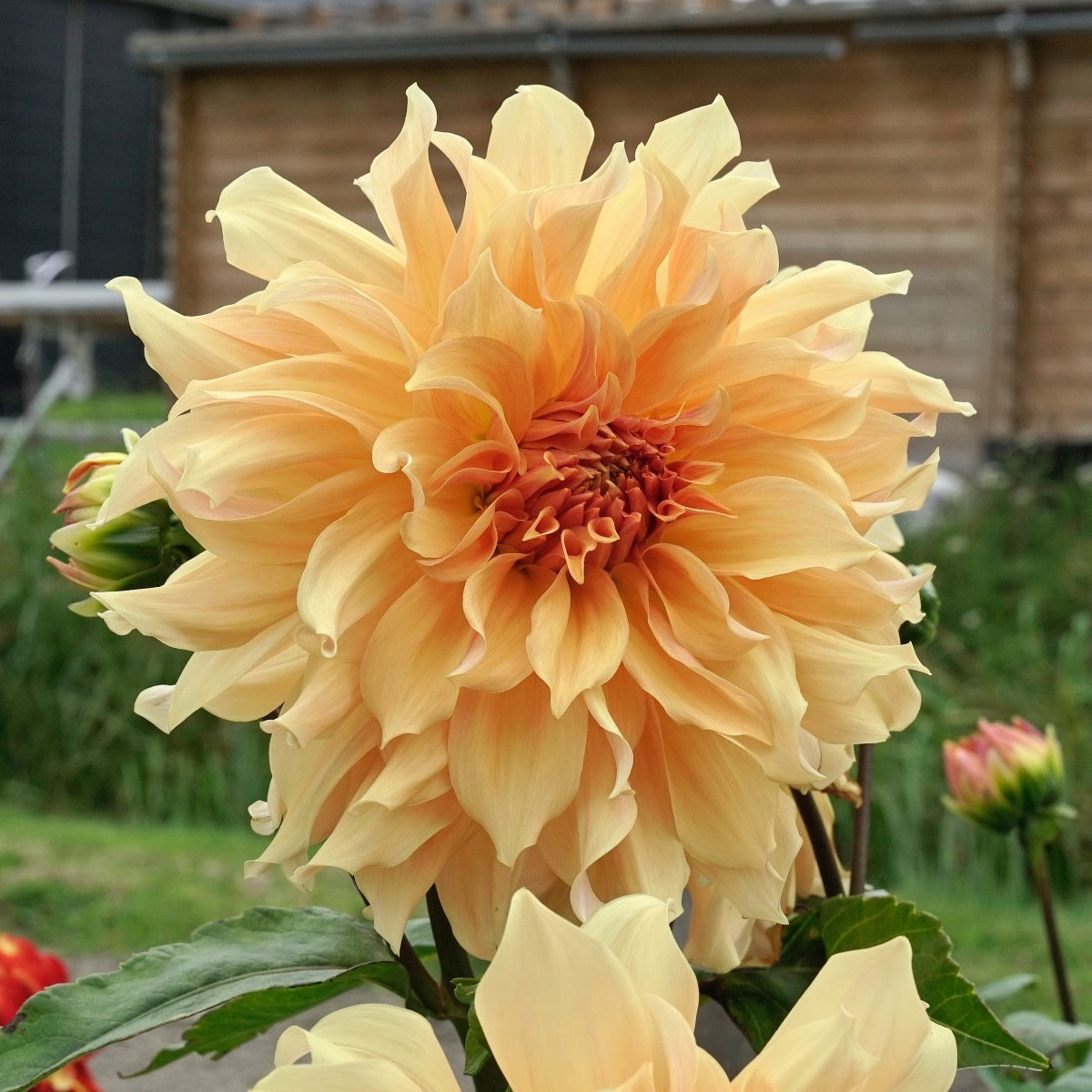
- The dahlia
- Dahlia plants
- Dahlia forcing
- Soil type
- Location
- Dahlia care
- Nutrition for the Dahlia
- Faded flowers
- Dahlia as a potted plant
- Storing dahlia tubers
The Dahlia
A Dahlia tuber usually looks dried out and shriveled by the time April arrives. Don't panic, it's still doing fine. To be sure that the Dahlia tuber is still alive, you can look for small growth points around and on the piece of cut old stem at the top of the tuber.
Dahlia plants

The Dahlias can be planted around the end of April. To be on the safe side, keep an eye on the 14-day weather forecast, because sometimes night frost is predicted around that time. If that is the case, postpone planting for a while because a Dahlia really cannot withstand frost. Are your Dahlias already in the ground and is night frost predicted? Then cover the Dahlias well with leaf mold or something else so that the frost cannot reach the Dahlia tuber.
The Dahlia is planted with the thickened roots downwards in the ground. You plant it so deep that the top of the tuber, where you see the piece of cut off old stem, is just below the ground. A few centimetres of soil on top of the tuber is good. The piece of cut off stem, if it is a bit longer, may just stick out above the ground. Around and on the piece of old stem the Dahlia makes its new shoots that grow into the Dahlia plant.
Dahlia forcing
Many seasoned gardeners choose to force their Dahlias. Force is the process of getting Dahlias to grow early. This is done by planting the tubers in pots with potting soil in March. These do not have to be large pots, any pot that the Dahlia tuber fits in is large enough. These pots are placed in a greenhouse, conservatory or on the windowsill. By the time the risk of night frost has passed, the Dahlias are removed from the pots and planted in the garden. The forced Dahlias have already sprouted and are showing green shoots.
A big advantage of starting your Dahlias growing earlier is that they will definitely flower a few weeks earlier. You don't have to worry that pre-grown Dahlias will also finish flowering earlier, because a Dahlia will always continue to flower until the first night frost or until the weather gets too cold.
Best soil type for Dahlia
Any well-drained garden soil is good for the Dahlia, a Dahlia is not picky. What a Dahlia does like is nutrition, lots of nutrition. A rich soil with lots of organic material that retains moisture well is ideal for the fast and large growing Dahlia. Lots of compost, leaf mold, potting soil or other organic material is what the Dahlia likes.
Location of the Dahlia
The Dahlia originally comes from Mexico, so it is a real sun worshipper. It prefers to be in full sun all day. If necessary, it can tolerate some shade and will certainly bloom beautifully, but it really comes into its own in the sun. If there is too much shade, your Dahlia will grow considerably taller and need more support. When planting, also make sure that your Dahlias are not exposed to too much wind. Higher and large-flowered Dahlia varieties in particular can suffer from the wind.
Dahlia care
The first thing you need to watch out for is that, especially just after planting, the snails don't eat your Dahlias. The young leaves of a sprouting Dahlia are a delicacy for the snail.
When your Dahlia is a few weeks old and has formed 3 or 4 pairs of leaves, you can choose to pinch out the top growth point. This may sound strange, disturbing a plant in its growth, but it ensures that the Dahlia becomes more compact and fuller in shape. Because the growth point has been pinched out, 2 new stems emerge from the leaf axils of the two leaves below. So you get a fuller Dahlia in return. If you do this, you will delay the first flowering of the Dahlia by about a week.
The larger Dahlias in the Northern European gardens grow just a little too tall to remain upright without support or string. In the South of Europe where the intensity of the sun is somewhat greater, the Dahlias remain somewhat shorter and therefore somewhat sturdier. To be on the safe side, give large Dahlias some support before the first flowers open. Place a few bamboo sticks near your Dahlia plants to which you can tie your Dahlias with a string if necessary.
Nutrition for the Dahlia
Also always keep in mind that a Dahlia is a hungry and especially thirsty plant. Make sure that the soil is rich in organic material and keep the soil moist. Especially a large Dahlia in full bloom uses a lot of water. This is also an important point of attention if you grow Dahlias in pots or flower boxes. Do you see your Dahlias become a bit lighter green in color or even a bit more yellow in the summer months, while they are getting enough water? Then feel free to sprinkle some dried cow manure or another fertilizer. Your hungry Dahlia probably has a lack of nutrition and extra fertilization can make your Dahlia recover enormously.

Remove faded flowers
A Dahlia is an exuberant bloomer, there is no other bulb or tuber crop that can produce so many flowers. To get the most out of your Dahlia, it is advisable to remove faded flowers. Simply pinch them out between your finger and nail or cut them off with scissors. By removing the faded flowers, the Dahlia will immediately put energy into the two flower buds that you see appearing in the leaf axils of the top pair of leaves. If you leave the faded flower, the Dahlia will also use a large dose of its energy to create seeds in the faded flower. So quickly get rid of those faded flowers so that two new ones can take their place as soon as possible.
If you give your Dahlia enough water and food, and you keep removing the dead flowers, it will bloom until the first night frost or until a cold autumn storm takes it down. A Dahlia goes down fighting and that is a nice description of the long-lasting bloom of the Dahlia.
Dahlia as a potted plant
For the small garden, terrace, patio or on a balcony, the shorter Dahlias are particularly suitable. The shorter Dahlias have been specially selected to also perform well in pots and flower boxes. If you plant a Dahlia in a pot, use a pot with a reasonable capacity of at least 10 litres so that the Dahlia has nutrition and does not have to be watered every few days. If you plant larger and higher Dahlias in a pot, that is also fine, but try to use even larger pots. The larger the Dahlia, the larger the pot that is needed to let your Dahlia bloom well.
Plant your Dahlia in the pot, as you would in the open ground, with the top of the tuber just below the ground. The piece of cut off old stem may still be visible if it is a bit long. Also be careful not to fill the pot completely to the edge with planting soil. If you leave a few centimetres of space under the edge of the pot, you will enjoy this a lot when watering. Feel free to try a Dahlia in a pot. The shorter varieties are really excellent and, if you take good care of them, will give you a cloud of happy flowers until well into autumn.
Storing Dahlia tubers during the winter months
If the leaves of the Dahlia have turned yellow and died, you can dig up the Dahlia tuber to store it until the following spring. Do this before the first frost because a Dahlia tuber is very sensitive to freezing. If you live in an area where it hardly or never freezes, you can also choose to leave the Dahlias in the ground. But this does not always work well, too much moisture in the winter period can cause the Dahlia tuber to rot. My experience is that digging up and storing the Dahlia tubers frost-free is the most reliable.
When digging up, keep in mind that a Dahlia tuber can be very large. Do not put the spade or fork too close to the Dahlia plant in the ground. This mistake is made too often and many Dahlia tubers have been ruined. Damaged Dahlia tubers are more susceptible to rot and drying out during storage. After you have removed the Dahlia tuber from the ground, cut the stems a few centimeters above the tuber.
Do not clean the tubers too much after harvesting, some soil may remain on and between the roots. Sometimes people rinse their Dahlia tubers clean, but experience shows that clean rinsed tubers dry out more during storage than Dahlia tubers that have not been washed. Rinsing also causes a little irritation to the Dahlia skin. The dirt, sand and peat provide a little extra protection.
Then store the Dahlia tubers frost- and draught-free until it is time to plant them again. Put them in a crate or box, rolled up in old newspapers or in wood chips. The packaging material ensures that the Dahlia tubers do not dry out too much. A Dahlia can dry out considerably during storage and shrivel up completely if you do not pack them properly. You can also wrap them in newspapers and put them in plastic bags. If you do this, make sure that there is always some fresh air.
End of April beginning of May, when the risk of night frost has passed, you can plant the Dahlia tubers again. By the time you plant the Dahlia tuber again, it will look quite shriveled. But if you see growth points appearing around or on the old cut stem, your Dahlia is still very much alive and there is nothing wrong.
You are most welcome to take a look at our range.

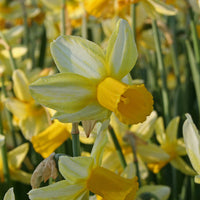



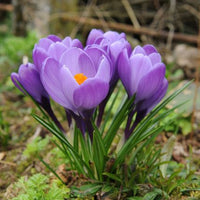




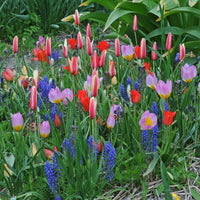


 Deutsch
Deutsch English
English